- Established 1982 -HOME: www.hiltonpond.org
THIS WEEK at HILTON POND Subscribe for free to our award-winning nature newsletter (Back to Preceding Week; on to Next Week) |
Our 30th Costa Rica-East (Paraíso/Ujarrás) Contact Holbrook Travel to register today! Come be an integral part of a real citizen-science project! |
LATE MARCH 2018: We returned from our latest Operation RubyThroat hummingbird expedition to Costa Rica in the wee hours of 18 March 2018, having been re-routed through Miami instead of following our scheduled non-stop path from San Jose to Charlotte. After too few hours of sleep we arose to a very different ecosystem in the Carolina Piedmont and deployed several traps to see what birds we might catch at Hilton Pond Center. No Lesson's Motmots or Variable Seedeaters were expected--nor were any of those Ruby-throated Hummingbirds we had captured a few days previously in the Chayote fields at Ujarrás. Fast as they fly, "our" Costa Rican ruby-throats (banded, and color marked with blue dye on the upper breast or throat) wouldn't be expected locally until the last week of March. All text, maps, charts & photos © Hilton Pond Center Looking at the calendar we realized we had missed being home for St. Patrick's Day, significant because we have Irish heritage AND because 17 March is the date we traditionally recommend hanging hummingbird feeders at this latitude. Our earliest ruby-throat at the Center came last year on 26 March--a male banded the preceding year--and we like to have several feeders up about ten days in advance of our earliest historical date. That's the biggest spring season mistake made by many hummingbird enthusiasts: Not putting up feeders until they SEE their first hummer. (NOTE: We actually maintain 2-3 feeders all winter, just in case one of those cold-weather vagrant hummingbirds wanders by. That happened in November 2001 and September 2002 when Rufous Hunmmingbirds appeared in our traps.) In the highly competitive sport of hummingbird feeding, if you want to be able to brag to your neighbors about getting the first hummer of the season you need to hang at least one feeder BEFORE the anticipated early arrival date. No need to fill your feeder(s) all the way; there won't be enough hummingbirds to drain them anyway. (DO, however, replace the 4:1 sugar water with fresh mix after a week--more often than that if the weather is warm, and even every otherday in hot August.) If you're not sure about when to expect your first Ruby-throated Hummingbirds, we offer the map above showing anticipated early arrival dates for your latitude. Our Canadian friends may not see their first ruby-throats until May. (Click on the image to open a larger map in a separate browser window.) All text, maps, charts & photos © Hilton Pond Center
All text, maps, charts & photos © Hilton Pond Center Weather-wise, the second half of March 2018 was a bit unpredictable--are at least unexpected--at Hilton Pond Center, with temperatures ranging from a sub-freezing low of 30.9° on 23 March to a balmy high of 77.1° on the 29th. We had wind gusts in excess of 30 mph on the 21st and got some much-needed precipitation--1.78" to be exact. On 20 March--the first day of spring--an angry, strangely hued sky (above) brought a smattering of 3/8" hail. All text, maps, charts & photos © Hilton Pond Center
All text, maps, charts & photos © Hilton Pond Center Our Hilton Pond "Bird of the Day" on 21 March 2018 undoubtedly was the hook-billed, yellow-eyed Osprey (above) that made numerous swooping circles over the property this afternoon before landing in a Loblolly Pine a hundred yards away on the far side of the pond. Shortly after we snapped a few photos the Osprey headed northwest, battling strong 30+ mph wind gusts from that direction. The bird is likely a migrant--perhaps moving through from wintering grounds in the faraway Neotropics to a more northerly breeding site--and today it seemed to be eying the pond for a big fish to help fuel its migratory flight. Although there are breeding Ospreys in this part of the Carolina Piedmont, this particular bird appeared too intent on heading north to be a local nester. (Yard Bird #43 for 2018.) All text, maps, charts & photos © Hilton Pond Center
All text, maps, charts & photos © Hilton Pond Center As far as we can observe, this year Hilton Pond is home to just one established "pair" of Wood Ducks. On 23 March the local hen was sitting atop a fallen log near the dam, watching as two drakes patrolled the water in front of her. Every now and again, one male (above)--likely her "mate"--sped up to chase the other, almost catching the second bird before he flew some distance away. The drakes repeated this behavior over and over again for at least an hour. We suspect the alpha male was trying to prevent the interloper from stealing a copulation with the female. Wood Duck hens typically lay a clutch of up to 14 eggs--one per day--and it's likely each egg requires a separate copulation for fertilization. Thus, an alpha male must remain ever-vigilant over a two-week span, lest "his" hen end up incubating one or more eggs unrelated to him. "Monogamous" pair bonds do occur in nature, but "cheaters" are always on the prowl. All text, maps, charts & photos © Hilton Pond Center
All text, maps, charts & photos © Hilton Pond Center We frequently see Chipping Sparrows (CHSP) when we're exploring the neighborhoods around Hilton Pond Center; there they often frequent roadsides, apparently gathering fine grit for their crops. Despite local abundance we seldom host this species at our many feeders--at least not until late winter. Every year about the first of March dozens of chippies begin to appear at the Center's platform feeders and on the ground beneath, where they fill up on tiny white millet seeds that go untouched by many other bird species. We've never figured out why our Chipping Sparrows seem to avoid this abundant food source during the very coldest months of the winter and suddenly appear in March. Taken through window glass, the photo above shows a CHSP in late winter plumage at one of the Center's water gardens. As spring progresses the bird's crown will become completely rust-colored and the upper and lower mandibles will turn black. There's no obvious gender dimorphism in this species, although males tend to be a little larger than females. Curiously, we've captured Chipping Sparrows on our hummingbird study sites in Belize, where they are residents that do not migrate. Some North American chippies ARE migratory, however. One I banded at Hilton Pond in April 1994 was recaptured and released by another bander the following January in Gainesville FL! All text, maps, charts & photos © Hilton Pond Center
All text, maps, charts & photos © Hilton Pond Center We watched and we looked, Sugar water feeders were hung and our hummer traps were ready, but on 27 March we did NOT see our first Ruby-throated Hummingbird (RTHU) of the new season. What's special about that day, you ask? Well, 27 March is the date when our first RTHU arrived at Hilton Pond Center in four different years since 1984--including last year (2017); our only earlier one was an already banded adult male that appeared on the 26th. Other very early dates have been 30 & 31 March. Past that period it's been a hodge-lodge, with more typical early arrivals during the first two weeks of April--sometimes well after that. The moral of the story: Don't be alarmed if you don't get hummingbirds at the front end of migration season. Every year is different, and some years the ruby-throats come late. Think positive and keep your feeders fresh. NOTE: The feeder in the photo above is an Aspects High Perch™ 16-ounce model marketed by Wild Birds Unlimited. In support of our hummingbird research, this year Liz Schmid--owner of the WBU franchise in High Point NC--donated 24 of these feeders to Hilton Pond Center. (Liz is a long-time friend and two-time alumna of our Operation RubyThroat expeditions to the Neotropics. She also hosts us most years for "Hummingbird Mornings" banding demonstrations at a High Point venue.) We anticipate these new feeders from Liz will help because they're fast to clean--even dishwasher safe; they are relatively expensive but come with a lifetime guarantee. With high perches these feeders often make it possible to observe a hummingbird's legs for the presence of a band. We will be putting the WBU feeders to good use and greatly appreciate Liz's generous donation. All text, maps, charts & photos © Hilton Pond Center
All text, maps, charts & photos © Hilton Pond Center For a bander, not much is more exciting than an e-mail from the federal Bird Banding Laboratory (BBL) with a SUBJECT line of "Report to Bander." This means someone somewhere else has encountered one of the bander's birds, with the e-mail containing info that allows the bander to conclude something about bird migration and longevity. Such was the case on 28 March when we heard from Carolyn Parker at the BBL. Back on 25 January 2016 at Hilton Pond Center we rose early to set a couple of very reliable traps baited with a tube feeder full of black sunflower seeds. During the course of that day two years ago we caught, banded, and released a Carolina Chickadee, two Pine Siskins, and ten American Goldfinches. We've recaptured none of those birds since. However, one goldfinch (#2750-48470) banded as an after-hatch-year female survived that winter and the next and was reported this week after it flew into a reflective window on a camper at Mebane NC on 22 March. Mebane is about 130 miles northeast of Hilton Pond. It's unlikely this AMGO--an after-third-year bird at time of her recent demise--was already migrating north in mid-March. I suspect she was actually nomadic and chose to spend one winter at the Center and another up in Alamance County. (Where she was in the winter of 2016-17 is anyone's guess.) In any case, we're grateful the finder--Kathy Sines--took time to file her on-line report via the BBL Wewb site, and that she has since soaped her camper windows to avoid additional window strikes. One bird is lost, but at least we got interesting encounter data from it. This particular bird was only our 62nd foreign encounter outside York County SC--from 67,100+ birds banded at the Center since 1982; thus, you can understand why we were excited to get the report. Of those 62 encounters, American Goldfinches accounted for seven: The Mebane bird, plus three in New York State, two in Maryland, and one in far-off Maine. All text, maps, charts & photos © Hilton Pond Center
All text, maps, charts & photos © Hilton Pond Center At 7:17 p.m. on 28 March we spotted Hilton Pond Center's first Ruby-throated Hummingbird of the year--a fly-by male checking out the feeders but not entering a trap. He was two days later than our all-time early record. (Yard Bird #43 for 2018.) That hummer was back bright and early the next morning. A closer view while he perched at a window feeder showed he had a shiny aluminum band on his left leg--undoubtedly one of "our" birds from a previous year. (We band all our male birds on their left leg; most right-hander banders place bands on their birds' right legs.) On the evening of 30 March we finally got a photo (above) of that first Ruby-throated Hummingbird of 2018--a male at dusk, silhouetted against a blue-gray sky in a tree outside our office window. All text, maps, charts & photos © Hilton Pond Center
All text, maps, charts & photos © Hilton Pond Center We were thrice honored on 31 March at the Museum of York County in Rock Hill SC: 1) We got to hear a presentation by Savannah River Ecology Lab's Dr. Whit Gibbons, who arguably has more in his head about southeastern herpetofauna (reptiles and amphibians) than any other ecologist; 2) Whit autographed for us a copy of his recently published and profusely illustrated Snakes of the Eastern United States; and, 3) We got to hold for the first time a fully grown 12" Scarlet Kingsnake, Lampropeltis elapsoides (above), which is an apparent mimic of the dangerous Eastern Coral Snake ("red on black, venom lack"). This particular Scarlet Kingsnake specimen (photo above) was especially dark; many individuals have red noses and heads. Although we're told there may be a few eastern York County SC records for the species, it is far more more common in the lower part of the state. We've never seen a Scarlet Kingsnake at Hilton Pond Center, but we do have ten other serpents on our "Yard List." Other reptiles include six species each for turtles and lizards. All text, maps, charts & photos © Hilton Pond Center Don't forget to scroll down for Nature Notes & Photos, 
Checks can be sent to Hilton Pond Center at: All contributions are tax-deductible on your |
|---|
|
"This Week at Hilton Pond" is written and photographed by Bill Hilton Jr., executive director of Hilton Pond Center for Piedmont Natural History
|
|
|
Please refer "This Week at Hilton Pond" to others by clicking on this button: |
Comments or questions about this week's installment? Send an E-mail to INFO. (Be sure to scroll down for a tally of birds banded/recaptured during the period, plus other nature notes.) |

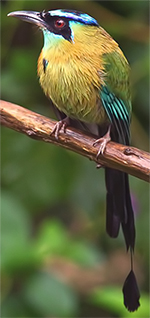
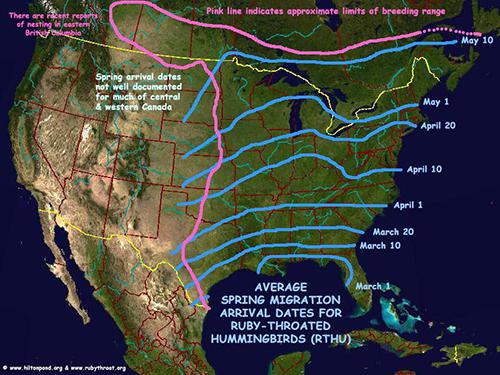

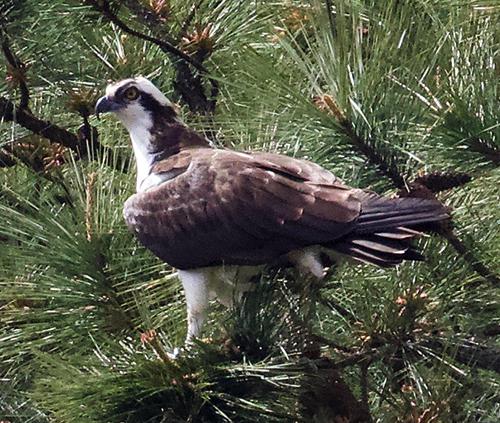
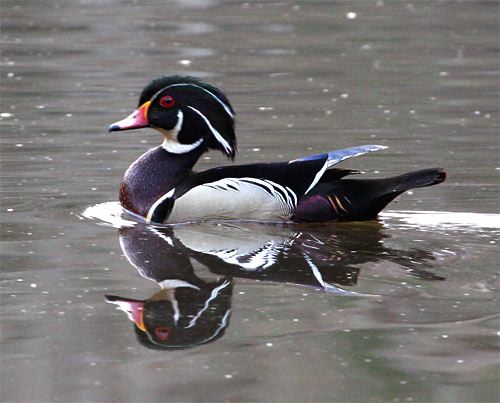

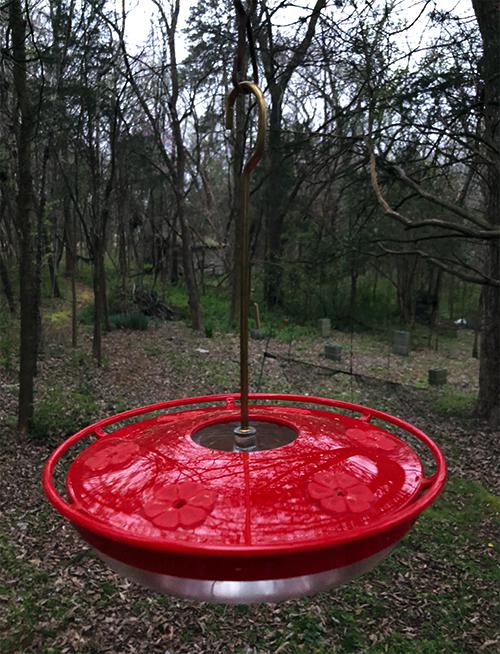
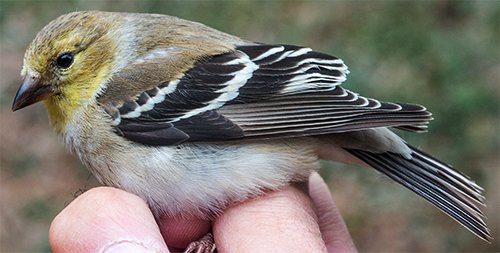
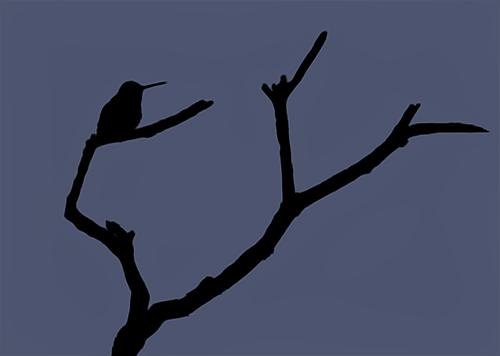
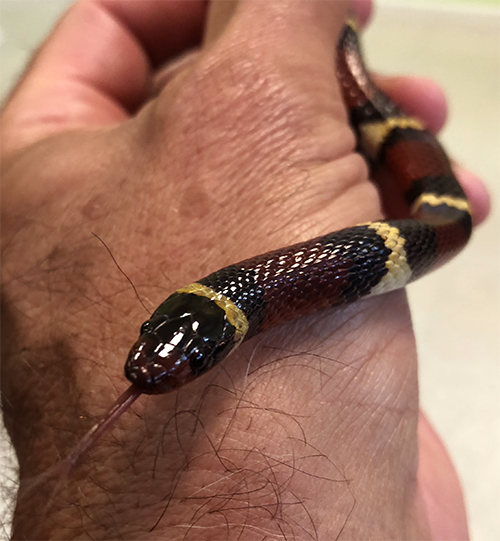








 Please report your
Please report your